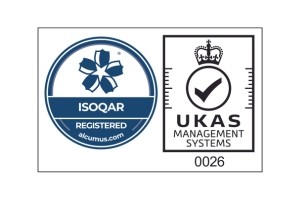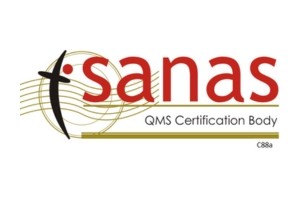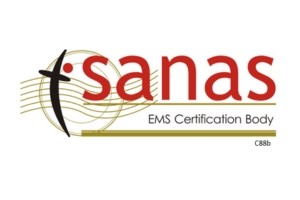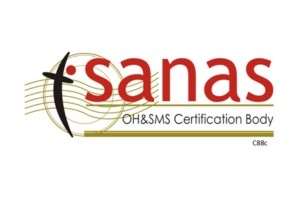ISO 14001:2015 INTERPRETATION REVIEW
ISO/TC 207/SC 1
The objective of this blog post is to create a clear understanding of the requirements within ISO 14001:2015 by means of answering recently asked questions.

Content
• Who are ISO/TC 207/SC 1
• Interpretations?
• Review of updated interpretations ISO/TC 207/SC 1
• Understand the ISO committee structure
• Review process
• Interpretations to date –22 covered today
• Full list to be found at: ttps://committee.iso.org/sites/tc207sc1/home/projects/published/iso-14001–environmental-manage/iso-14001-interpretation.html
• The ISO sub-committee with responsibility for ISO 14001 -and other supporting standards;
• Work Programme focus is on its core standard ISO 14001 and four key components;
• Overall understanding and implementation (ISO14004);
• Evaluating consequences of environmental aspects (ISO14002-1);
• Policy and organisational elements (ISO14006 & ISO14009 -WIP);
• Evaluating strategic & monetary (financial) consequences (ISO14007 & ISO 14008.

Interpretation Process • Anyone can request an interpretation -via BSI Standards. • May be answered at that stage -but forwarded to TC207/SC1. • All requests received & formal responses given by ISO member bodies will be included in
an annual compilation of interpretations. • SC1 will be asked to consider all information received & if any interpretation is at variance
with the formulated position of SC1, then an explanation of the variance will be provided to the member body. • SC1 will make the annual compilation of interpretations after its review publicly available on their website free of charge. • Herewith the responses received.
General Q
Where to draw the border line between legal requirements on the protection of the natural environment and those protecting occupational health and safety issues. Had been raised by CB as a non-conformance for not including H&S legislation.
A All organisation’s are obliged to comply with all applicable legislation. The standard says that the organisation shall “determine and have access to the compliance obligations related to its environmental aspects..”. If there are no environmental aspects that can be linked to legal requirements concerning occupational health and safety issues, then they do not have to be included. Obviously acceptable to include other obligations – not a requirement!
General
Q In some places in the Standard, the organisation is directed to take certain items into account, while in other places in the Standard, the organisation is directed to “consider” certain items. Is there a difference?
A ISO 14001 uses the word “consider” and the phrase “take into account” with a specific intent. The word “consider” means it is necessary to think about the topic but it can be excluded; whereas “take into account” means it is necessary to think about the topic but it cannot be excluded.
General Q
Is Section 3, Terms and Definitions, binding and, if so, may an auditor determine whether “appropriate” environmental objectives have been set to meet the requirements of definitions 3.2.6?
A
The only sections of ISO 14001 against which an organisation’s conformance is audited are Sections 4 to 10 -EMS Requirements, the terms of which are clarified by the definitions in Section 3. If the environmental objectives are consistent with the environmental policy, and their development has taken into account the organisation’s significant environmental aspects and associated compliance obligations and considered its risks and opportunities then the objectives are consistent with the standard.
Clauses 4 & 6 Q
Does ISO 14001 require an organisation to demonstrate that it has addressed requirements related to environmental aspects, significant environmental aspects, policy commitments, context issues and concerns, risk/opportunities & compliance obligations individually for each sub-clause in ISO 14001, or can an organisation demonstrate that it has addressed these collectively, through the significant environmental aspects determination process?
A
ISO 14001 does not mandate separate processes or procedures to be used for “addressing” its requirements -provided the requirements are addressed! An organisation might have a single “environmental planning” process that addresses a number of requirements set out in Clauses 4 and 6. The organisation simply needs to provide evidence that each of the separate requirements are addressed.
Clauses 6.1.1, 6.1.2 Q
Does ISO 14001:2015 allow an organisation to consider environmental risks and opportunities as environmental aspects, and those aspects that it intends to address, as its significant environment aspects?
A
There is a relationship between an organisation’s significant environmental aspects and the risks and opportunities related to its environmental aspects, but they should not be necessarily treated as identical. The definition of “risks and opportunities” is not the same as “significant environmental aspects.” Environmental aspects can result in risks and opportunities, which can be determined as part of the significance evaluation, or determined separately. There may be other risks and opportunities that need to be addressed in the environmental management system –issues raised in context
Clause 5.2
Q What is meant by the “commitment to fulfill its compliance obligations” in Section 5.2(d) –Policy in ISO 14001?
A The relationship between ISO 14001 and regulatory compliance is addressed in a number of places in the standard. This commitment is demonstrated through the EMS processes and actions that the organisation establishes, implements and maintains. The commitment to comply is reinforced by the requirement that top management periodically reviews the adequacy, suitability and effectiveness of the EMS in meeting its expected outcome. A legal noncompliance is not necessarily raised as an EMS nonconformity if, for example, it is identified and corrected by the EMS processes.
Clause 5.2 Q
Element 5.2 Environmental Policy states, ‘top management shall establish, implement and maintain an environmental policy that, within the defined scope of its EMS, is…’ Does this mean that the policy statement must now include wording from the scope statement to link the operations of a location to the policy statement?
A
No. The Standard requires that an organisation define and document the scope of its EMS (Section 4.3) and that top management establish, implement and maintain an environmental policy (Section 5.2). There is no requirement in ISO 14001 that an organisation includes specific wording from its EMS scope statement within its environmental policy.
Clause 5.2 & 4.3 Q
In determining whether the environmental policy is “appropriate to the purpose and context of the organisation, including the nature, scale and environmental impacts of its activities, products and services,” is it relevant for an assessor to determine whether the scope of the policy covers all of the management units within the organisation being audited?
A • The assessor must determine whether the policy is appropriate for all of those management units that are within the scope of the EMS, as it has been defined by the organisation. • Once the scope has been defined, all activities, products, and services that fall within its boundaries need to be included within policy commitments.
Clause 5.2 & 4.3 Q
Must a regulated environmental aspect automatically be considered a significant environmental aspect?
A No. Section 6.1.2 requires an organisation to “determine those aspects that have or can have a significant environmental impact, i.e., significant environmental aspects, by using established criteria.” ISO 14001 does not establish the criteria for determining significance. Section A.6.2 states that environmental criteria are the primary and minimum criteria for assessing environmental aspects, but it is the organisation that sets the criteria for determining those that are significant –so if an organisation wants to make it significant it can –but this is not mandated by the standard.
Clause 6.1.2 Q
Must a regulated environmental aspect automatically be considered a significant environmental aspect?
A
No. Section 6.1.2 requires an organisation to “determine those aspects that have or can have a significant environmental impact, i.e., significant environmental aspects, by using established criteria.” ISO 14001 does not establish the criteria for determining significance. Section A.6.2 states that environmental criteria are the primary and minimum criteria for assessing environmental aspects, but it is the organisation that sets the criteria for determining those that are significant –so if an organisation wants to make it significant it can –but this is not mandated by the standard .
Clause 6.1.2 Q
Is it permissible for a small organisation to declare that they have no significant aspects and still be conforming to the ISO 14001 standard?
A
Although there is no explicit requirement in ISO 14001 that an organisation will identify one or more significant environmental aspects, there is an underlying assumption that the organisation will do so. The intent of the requirement to determine those aspects that an organisation considers significant is to enable the organisation to focus attention and resources on its most important environmental aspects, recognizing that not all aspects require or deserve the same degree of management. Significance is intended to be a relative term. What is significant for one organisation may not be for another!
Clause 6.1.3 Q
Does Section 6.1.3 “Compliance obligations” require that the organisation must have its own direct knowledge of the environmental legal requirements that are applicable to its products in all countries into which they are exported and not be able to rely on either a related corporate entity which sells the product in a foreign country or an independent importer customer to which it ships the product to have and apply such information?
A With regard to products, the Standard does not specify geographic boundaries, nor how the determination and access requirements can be accomplished by the organisation. Section 6.1.1 requires the organisation to establish, implement and maintain a process to meet the requirements in 6.1.2 –6.1.4. Therefore, it is up to the organisation to establish a process as to how it will determine and have access to such legal requirements. This may also depend the level of control or influence an organisation can exercise over the use of its products.
Clause 6.1.3 Q
Must an organisation have access to the ISO 14001 standard either in hard copy, via computer or by an external source since the organisation is certified to that standard?
A
An organisation seeking to conform to ISO 14001 must have access to information related to the standard’s requirements, including any subsequent revision, so that it can take these requirements into account in establishing, implementing and maintaining its environmental management system.
Clause 6.1.3 & 7.5.3 Q
Is ISO 14001 Standard a “compliance obligation” under Clause 6.1.3 and also a document of external origin?
A
Yes, ISO 14001 is a “compliance obligation”. ISO 14001 defines compliance obligations (see 3.2.9) to include requirements that an organisation has to or chooses to comply with, and notes that these can arise from mandatory requirements as well as voluntary commitments, such as organisational and industry standards, and codes of practice. ISO 14001 is documented information of external origin.
Clause 6.2 Q
Is it a non-conformance if an organisation establishes environmental objectives but, at the time of the audit, none relate to an identified significant aspect?
A
No. Clause 6.2.1 requires that significant environmental aspects and compliance obligations be taken into account when establishing and reviewing environmental objectives. It also requires that risks and opportunities be considered. However, it does not explicitly require that there be an objective related to significant aspects, compliance obligations or risks and opportunities at all times. Over time, however, given the required commitment to continual improvement, it would be expected that there would be one or more objectives related to one or more significant aspects.
Clause 6.2 Q
Must objectives be set which are explicitly related to the organisation’s commitment to environmental protection, including pollution prevention or are the scope and content of environmental objectives solely at the discretion of the organisation?
A
This question raises the issue that one cannot read a particular sentence or section of the ISO 14001 standard in isolation from the other sections of the standard. There is an interrelationship between the requirements in some sections with the requirements in other sections. Section 6.2 does not by itself require that the documented objectives explicitly mention environmental protection or prevention of pollution. It does however require the organisation to take into account its significant environmental aspects and associated compliance obligations when setting its objectives.
Clause 7.2 Q
Does ISO 14001 imply some consideration by the organisation of legal requirements for training of employees in establishing competence and training?
A
ISO 14001 in Section 7.2 requires the determination of training needs associated with an organisation’s environmental aspects and its environmental management system. If an organisation is legally required to provide certain kinds of training, such training should be identified as a “need“ under clause 4.2.
Clause 8.1, 7.2, 7.3, 7.4, 8.2.
Q
Company A out-sources part of their production operations (e.g. metal coating, electroplating or painting) to Company B.
Company B is a separate company located in a different part of the country.
• Is Company B considered “persons doing work under” Company A’s control?
• If so, what does ISO 14001 require Company A to do regarding ensuring the competence of Company B?
• What does ISO 14001 require Company A to do regarding identifying training needs for Company B employees?
A
In the example given in the question, Company A would need to determine whether there are any tasks being performed by persons within Company B that are related to Company A’s environmental aspects of activities, products or services within its EMS scope.
If so, Company A would need to implement some mechanism(s) to make them aware of the particular EMS requirements related to these particular tasks.
Company A also would need to determine if there are any tasks that can affect its environmental performance or ability to fulfill its compliance obligation, or, are related to emergency preparedness and response being performed by persons within Company B.
If so, Company A would be required to establish some means of ensuring that those persons are competent to perform those tasks.
Clause 9.1.2
Q
Is the intent of the requirement in clause 9.1.2, “Evaluation of Compliance” that only those working for on or behalf of the organisation conduct the evaluation(s) of compliance, or can these evaluations include those conducted by regulatory authorities?
A
The intent of Clause 9.1.2 is that an organisation will determine how it will periodically evaluate compliance, and can choose to include evaluations conducted by internal staff, consultants, and/or regulatory agencies. An organisation can use information from regulatory agency audits/inspections as part of its compliance evaluation process, but cannot rely on such audits/inspections alone.
Clause 9.1.2
Q
Is there an expectation in ISO 14001 that compliance with ALL applicable compliance obligations will be assessed for ALL environmental media over some time frame (e.g., every 3 years), or are periodic compliance assessments on a sampling basis (selected based on the environmental importance of activities, history of noncompliance, and other factors) considered adequate?
A
ISO 14001 requires the organisation to evaluate the fulfillment of its compliance obligations. It does not specify a particular methodology or frequency for doing so. Periodic compliance assessments performed on a sampling basis may satisfy this requirement if, taken together, they cover all applicable compliance obligations over a period defined by the organisation.
Clause 9.2, 7.2
Q
Does the standard require companies to select internal auditors who are Certified, have a background in Environmental Management, or have previous work experience in the environmental field?
A
ISO 14001 does not contain specific requirements on certification, education, or work experience for internal auditors or any other position. Clause 7.2 on competence, requires an organisation to “determine the necessary competence of persons doing work under its control that affects its environmental performance…” Thus, it is the intent of ISO 14001 that the organisation decides what education, training or experience, including certifications, is appropriate for its internal auditors.
Clause 9.2.2
Q
Does ISO 14001 section 9.2.2 require that the organisation conduct its internal EMS audit on an annual basis covering all elements (i.e. full scope) of the standard?
A
No. Section 9.2.2 requires an organisation to establish the frequency of its environmental management system audits. Since the “frequency” is not defined by ISO 14001, these audits may or may not be conducted on an annual basis. The environmental management system audit program takes into consideration the environmental importance of the process concerned, changes affecting the organisation, and the results of previous audits. ISO 14001 does not require that all elements of ISO 14001 be audited each and every time an audit is conducted, nor does it require that every single element be audited within a one-year period but rather that the program shall be established with consideration of the various factors described above.

